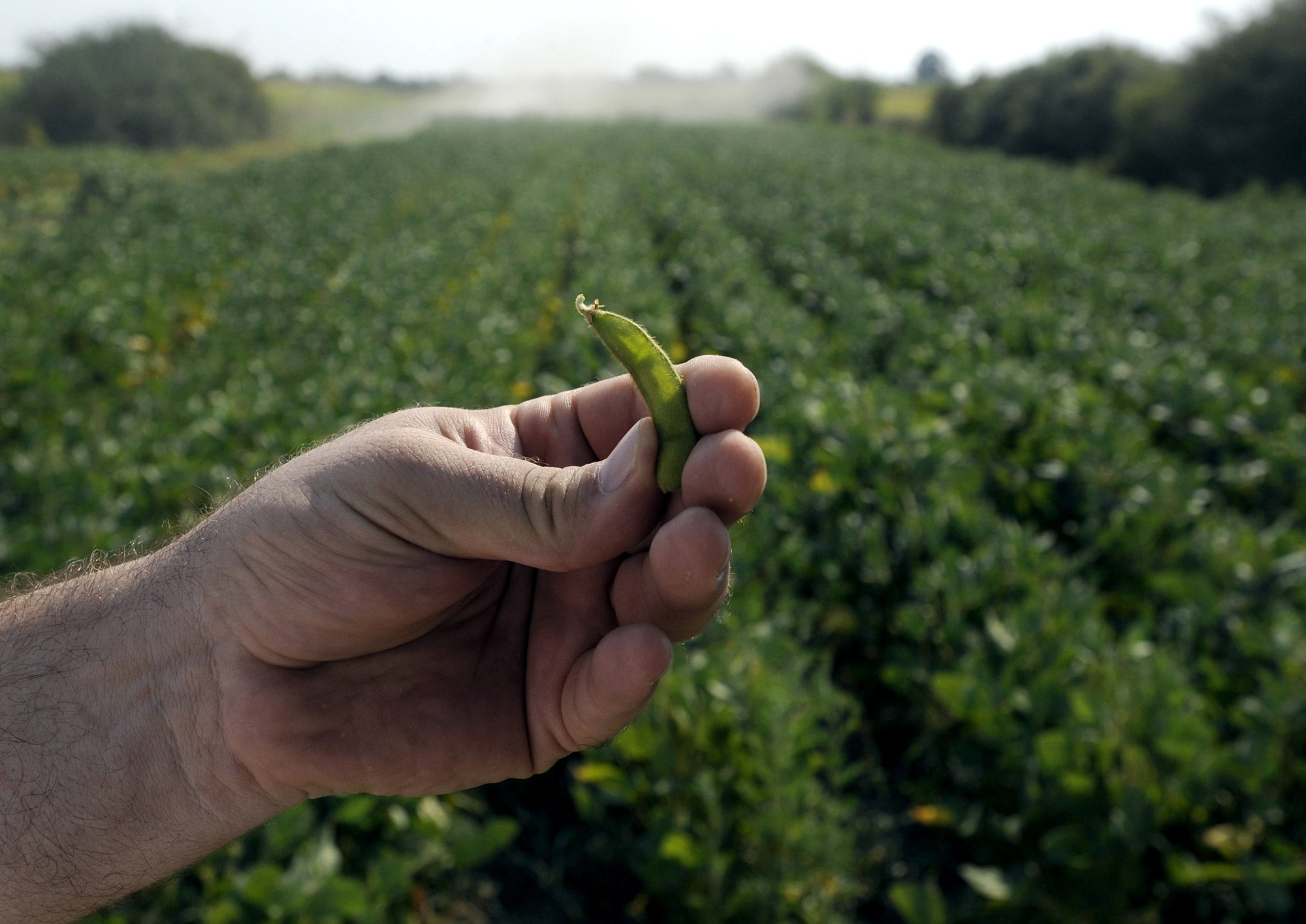A major federal court decision out of the California-based Ninth Circuit is reshaping how U.S. Department of Agriculture will have to think about GMO (genetically engineered) food disclosure, with big implications for the long-running debate over highly refined ingredients, QR-code labels, and what language companies can use on food packages.
For now, day-to-day labeling obligations do not change, but the ruling sets the stage for USDA to rewrite key parts of its National Bioengineered Food Disclosure Standard in ways that could reach all the way back to the farm gate.
On October 31, 2025, the U.S. Court of Appeals for the Ninth Circuit issued a unanimous decision in Natural Grocers v. Rollins, a case challenging USDA’s 2018 National Bioengineered Food Disclosure Standard rule, often called the BE Rule or the mandatory GMO disclosure rule.
The rule implemented the 2016 amendments to the Agricultural Marketing Act that created a national standard requiring consumer-facing disclosure when food is bioengineered or contains bioengineered ingredients.
Plaintiffs in the case were a group of grocery retailers and public-interest organizations; several producer groups, including the United States Beet Sugar Association, the American Sugarbeet Growers Association, and the American Farm Bureau Federation, intervened to defend the rule.
Congress passed the National Bioengineered Food Disclosure Standard in 2016 to create a single federal framework for disclosing whether foods are bioengineered, preempting the patchwork of state GMO-labeling laws. The USDA’s Agricultural Marketing Service finalized the BE Rule in 2018, and mandatory compliance began January 1, 2022.
The rule created a List of Bioengineered Foods, covering crops such as corn, soybeans, canola, cotton, sugar beet, and certain varieties of papaya, potatoes, apples, and others. Foods derived from those sources are presumed to be bioengineered unless manufacturers maintain records showing otherwise.
The regulation also laid out four disclosure options for foods that are or contain bioengineered ingredients: an on-package text statement such as “Bioengineered food” or “Contains a bioengineered food ingredient,” the USDA-approved BE symbol, an electronic or digital link such as a QR code accompanied by required text, or a text message disclosure. Alongside these options, the BE Rule included several exemptions, including a controversial carve-out for “highly refined” foods like sugars, oils, and starches that typically contain no detectable modified genetic material after processing.
The plaintiffs challenged three key elements of that framework under the Administrative Procedure Act: the exclusion of foods made from bioengineered ingredients where modified genetic material is not detectable in the final product, the USDA’s insistence on the term “bioengineered” rather than more familiar terms like “GMO” or “genetically engineered,” and the approval of QR codes and text messages as sufficient methods of disclosure.

What the court decided about highly refined ingredients
The most far-reaching part of the Ninth Circuit’s opinion concerns that “highly refined” or “not detectable” exception. Under the current BE Rule, a food made from a bioengineered source can be exempt from disclosure if the manufacturer can show that the product has been subjected to a refining process validated to make modified genetic material undetectable, or can produce testing results confirming the absence of modified genetic material in the final food. In practice, this has meant that many refined sugars, oils, and starches derived from bioengineered crops have not carried BE disclosures.
The Ninth Circuit concluded that the USDA acted unlawfully when it treated non-detectability as the same thing as non-presence. The underlying statute defines bioengineering in terms of whether the food “contains” modified genetic material. The court emphasized that different detection methods have different limits of detection, so a particular test’s failure to detect modified DNA does not prove that no modified genetic material is present at all.
Because the USDA never defined what would count as a sufficiently sensitive detection method and instead relied on non-detectability as a legal proxy for “does not contain,” the court held that this exclusion for refined foods could not stand.
At the same time, the Ninth Circuit rejected the idea that the USDA is powerless to draw any quantitative lines. It pointed to a separate provision of the Act, Section 293(b)(2)(B), where Congress explicitly authorized USDA to determine “the amounts of a bioengineered substance that may be present in food … in order for the food to be a bioengineered food.” In other words, while AMS cannot simply say “if you cannot detect it, it does not count,” it may adopt a threshold amount of modified genetic material below which a food will not be considered bioengineered for labeling purposes, so long as that threshold is grounded in the statute and supported by reasoned analysis.
The appellate court reversed the district court’s earlier win for the USDA on this question and instructed the lower court to grant summary judgment to the plaintiffs on the “not detectable” exemption, remand the relevant regulations to the USDA for further consideration, and then decide, after hearing from the parties, whether parts of the BE Rule should be vacated while the USDA reworks the definition and related provisions.


The word on ‘bioengineered’ versus ‘GMO’
On the terminology front, plaintiffs argued that USDA’s requirement that all mandatory disclosures use the term “bioengineered food,” without expressly permitting alternatives like “genetically engineered,” “genetically modified,” or “GMO,” runs counter to Congress’s goal of meaningful consumer access because shoppers are already familiar with those other terms.
The Ninth Circuit disagreed. It noted that Congress authorized the USDA to establish disclosure standards using the term “bioengineered” or “any similar term” as determined by the agency. That authority, the court said, leaves the choice of specific terminology to the USDA, and the department opted for “bioengineered” across all disclosure options to ensure consistency and minimize marketplace confusion. The court also recognized that “bioengineered” is narrower than some popular terms like GMO or genetically engineered and therefore more closely tracks the statutory definition.
For those reasons, the Ninth Circuit affirmed the district court’s earlier ruling upholding the USDA’s terminology decision. In practical terms, this portion of the decision leaves intact the existing obligation to use the word “bioengineered” in required disclosures on food labels. Companies remain free to use other terms voluntarily elsewhere on packaging if they comply with other applicable laws, but those terms do not substitute for the mandated “bioengineered” language.


Electronic and text-message disclosures under pressure
The third major piece of the ruling targets the USDA’s approval of electronic and text-based disclosure methods. The BE Rule allows four disclosure options: text, symbol, electronic or digital link, and text message. Congress directed the USDA to study whether an electronic or digital link would provide consumers with sufficient access to the required information under typical shopping conditions.
The plaintiffs argued that the agency’s decision to maintain QR-code and related digital disclosures, and to add a separate text-message option, violated the statute. The district court agreed that those provisions were unlawful, but it declined to vacate them out of concern for disrupting the food industry, instead remanding them to the agency without stripping them from the regulations.
The Ninth Circuit held that this was an abuse of discretion. In the appellate panel’s view, the district court could and should have ordered a prospective vacatur of the challenged provisions that would address disruption by, for example, postponing the effective date of vacatur or setting a sell-through timeline for already-labeled products. The court remanded the case with instructions that the district court prospectively vacate the regulations governing electronic and text-message disclosures0 — specifically 7 C.F.R. §§ 66.106 and 66.108 — after hearing from the parties on how that vacatur should be implemented.
Despite the strong language in the Ninth Circuit’s opinion, the decision does not immediately change what must appear on food labels. The BE Rule remains in effect while the case returns to the district court for entry of judgment and remand to the USDA. Nothing in the opinion itself requires manufacturers to pull products from shelves or redesign labels overnight.
The USDA will have to issue a new regulatory definition or revised framework for “bioengineered food” that deals squarely with refined ingredients and the meaning of “contains” modified genetic material. It will also have to amend the BE Rule provisions that authorize electronic and text-message disclosures, consistent with both the Ninth Circuit’s instructions and the feedback it receives in rulemaking.
»Related: The wrong question on GMOs




:max_bytes(150000):strip_icc()/2210-08-116_farm_field-320a3623098146a4b7cb6c4db45252c1.jpg)






:max_bytes(150000):strip_icc()/Markets-1-Soybeans-field-dramatic-up-14-5283b95420d5449fbb4c6ffaa3fa212f.jpeg)
:max_bytes(150000):strip_icc()/Solix_Horizontal-e1e391c161204ec9a9aec92db2f5f0aa.jpeg)